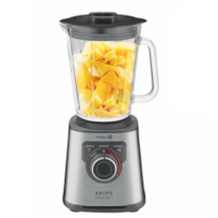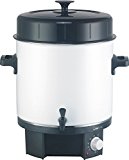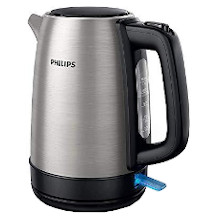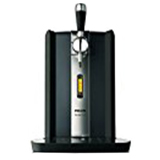Sous vide machine purchasing advice: how to choose the right product
- What You Need to Know
- In a sous-vide cooker, vacuum-packed food is cooked at temperatures of 40 to 99 degrees Celsius for several hours.
- Traditionally, sous-vide cookers are available in the form of a tank or a stick, similar to an immersion heater. Built-in appliances, on the other hand, are permanently installed.
- Practical extras such as a timer, a circulation pump and a temperature control optimise the use of a sous-vide cooker.
- Clean the sous vide cooker after each use. Removable and dishwasher-safe models are particularly practical.
Cooking in French
The sous-vide cooking method has been in vogue in domestic kitchens for some time now. This is the vacuum cooking of meat, fish and vegetables. The food is prepared in a water bath at relatively low temperatures of less than 100 degrees Celsius.
Food was first prepared in vacuum containers in the 1960s. At that time, this principle was considered an effective way to preserve food and thus make it last longer. However, this early method could not establish itself in private households because there were no suitable appliances on the market. It was not until the early 1970s that sous vide cooking found its way into everyday life in France: the chefs Georges Pralus and Bruno Goussault initially developed a method of vacuum cooking independently and later worked together to optimise this type of cooking. The foundation stone for the private sous-vide cooker was laid.
What is a sous vide cooker?
Sous-vide cookers are appliances that have been specially developed for preparing food under vacuum. The meat, fish or vegetables are placed in a plastic bag under the exclusion of air and cooked at relatively low temperatures of below 100 degrees Celsius. Sous-vide cookers are similar to deep fryers in which the vacuumed food is placed. Water is placed inside, which is heated like a conventional saucepan, but not brought to the boil. Alternatively, there are so-called sous-vide sticks, which are used like an immersion heater. The food is placed in an ordinary pot that is heated on a hotplate. Since the food has to be vacuum-packed, i.e. sealed airtight, you will need a vacuum sealer. You will also need vacuum bags, either from a roll or individually.
Sear once, please
If you are cooking meat, for example poultry, you should then sear it briefly in a pan. Ten minutes at around 70 degrees Celsius is sufficient. This kills salmonella and creates intense roast aromas.
What does sous vide cooking mean?
The term “sous vide” comes from the French and means something like “vacuum-tight”. In the meantime, this has become a common term. Because the food is sealed under vacuum and prepared at low temperatures of 40 to 99 degrees Celsius, the vitamins, nutrients and flavours are preserved. Spices or marinade are also added directly to the bag; the gentle preparation means that the food is not watered down and the seasoning and its own juices remain present. There will be no dry roasted meat with sous vide cooking. The only prerequisite is that the vacuum bags are surrounded by water all around. For this reason, you should never stack the bags.
Pro points
- The flavour of the food does not evaporate
- Food does not dry out
- Minerals are not washed out
- Vitamins are preserved
Drawbacks
- Process takes much longer than boiling or roasting
Models
Sous-vide cookers come in different models: As stand-alone pots or tanks and as sticks for which a separate pot is needed. Furthermore, sous vide cookers can be integrated into a kitchen as built-in appliances.
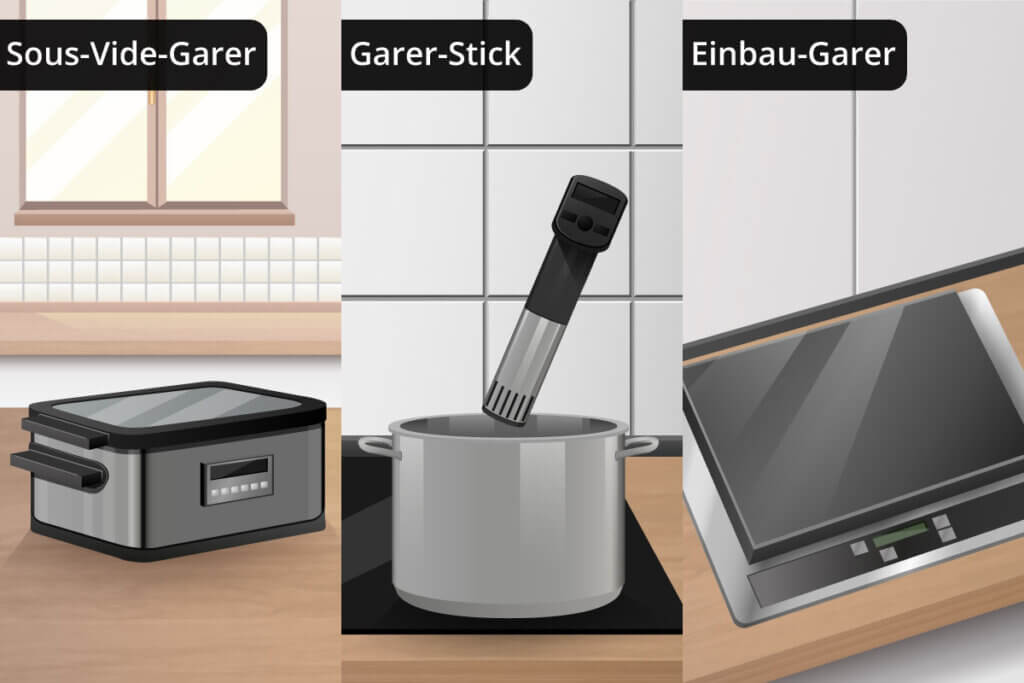
Pot or tank
These sous vide cookers are similar to a deep fryer. They usually hold 5 to 15 litres. Inside are several baskets or holding devices for the food to be cooked. This allows the water to circulate between the bags and cook all the food evenly from all sides. Under the tank is a heating plate, like in a kettle, which heats the water inside. So that no heat is lost and the heating time is also shorter, the pot is closed with a lid. This makes these sous-vide cooker models particularly flexible and energy-efficient. They can be placed anywhere; there just needs to be a power socket nearby. However, the appliances themselves are very large and take up a lot of space. For this reason, cleaning is also somewhat unwieldy. Without a removable interior, cleaning is even more complicated.
Pro points
- Good thermal insulation
- Low water evaporation
- Quiet operation
- Flexible placement
Drawbacks
- Takes up space
- Fixed capacity
- Complex cleaning
Stick
Sous-vide cooking sticks work like a water boiler; they are hung in a pot and heat the water in it via a heating module. This means you can decide for yourself how much water you want to heat. The only requirement is that the pot must have a certain minimum height so that the stick can hang on the side without resting on the bottom of the pot. Some models can heat up to 20 litres evenly. However, as conventional cooking pots do not have holders for the food to be cooked, you have to place the bags inside. This way, the food may not be cooked evenly. In addition, you cannot put a lid on the pot if the stick is on the side: Steam and heat energy are lost more easily. However, you can use a kitchen board or aluminium foil as an alternative. Sous vide insulation spheres are particularly practical: the small spheres are distributed on the surface of the water and thus prevent the water vapour from escaping. Sous-vide cooking sticks are cheaper and take up less space than other types. This makes them particularly suitable for beginners who want to try out the method.
Pro points
- Low price
- Easy handling
- Space-saving
- Compatible with own pots
Drawbacks
- Minimum height of pots
- No use of the lid
- Poor heat insulation
Built-in cookers
In gastronomic kitchens, sous-vide cookers are usually integrated into the worktop. These cooker models are also available for private households. However, you need to be sure where you want to install the appliance. Built-in cookers can also be retrofitted into a kitchen. The great advantage of built-in models is that they are very precise and energy-efficient, as hardly any heat is lost due to the closed installation. The precise temperature control of the food is particularly appreciated in the professional sector. Built-in cookers are always permanently installed in a worktop or kitchen unit; models that are attached to the wall and can be pulled out, similar to an oven, are particularly practical.
Pro points
- Exact temperature
- No heat loss
- Space-saving installation
Drawbacks
- Limited capacity
- No flexible use
What should be considered when buying a sous vide cooker?
When buying a sous vide cooker, you should pay particular attention to the temperature range and the temperature accuracy of the appliance. This is because you will only get the best possible result if the correct temperature is maintained over a certain period of time. To achieve the desired temperature, you need the appropriate power. The capacity can also be decisive; especially if you intend to cook large quantities of food sous-vide. The material as well as the weight are particularly decisive for the handling and cleaning of the appliances.
Power

The power of sous-vide cookers ranges from 400 to 2,000 watts. Most appliances have a power of at least 500 watts; this is usually perfectly adequate for private purposes. The larger the capacity of the cooker or pot, the more power the appliance should have. Since sticks can be used in different pots, the appliances usually have a power of at least 800 to 1,000 watts. Cookers with up to 2,000 watts of power are used primarily in the catering trade.
Temperature range
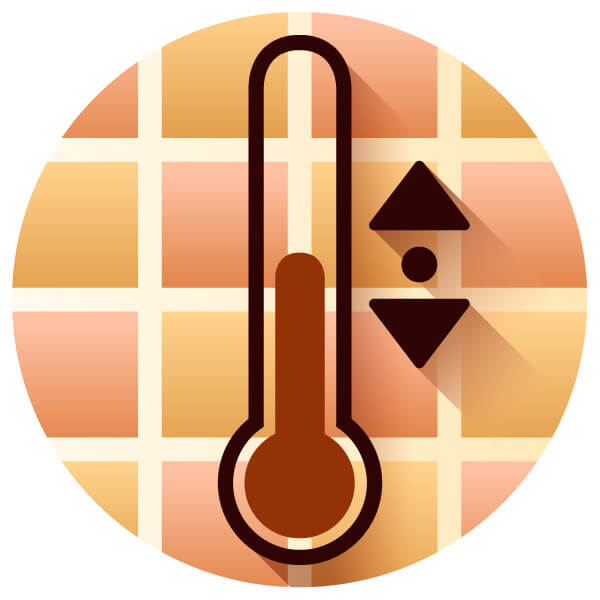
The temperature range that a sous-vide cooker can cover is between 0 and 99 degrees Celsius. For most appliances, it starts at 40 degrees Celsius, while some models can also reach very low temperatures of around 25 degrees Celsius. 40 to 50 degrees Celsius is the minimum temperature value a cooker should produce. The maximum value should not exceed 99 degrees Celsius, as food would boil rather than cook at over 100 degrees Celsius.
Temperature accuracy
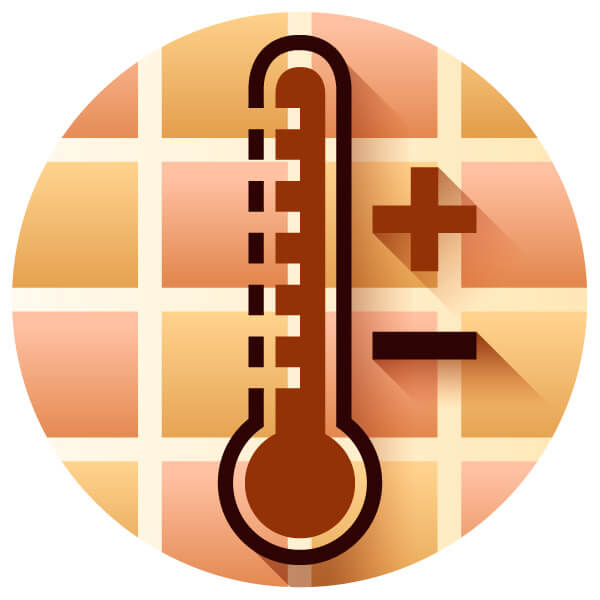
To achieve optimum cooking results, the temperature must be set and maintained accurately. Many cookers can be set to within one degree Celsius. The temperature can be adjusted in steps of plus or minus one degree Celsius. With some appliances, it is possible to proceed in steps of 0.5; with other models, you can even adjust the temperature in steps of 0.1. To keep the water at an even temperature, some sous vide cookers have an automatic circulation system that distributes the water.
Material
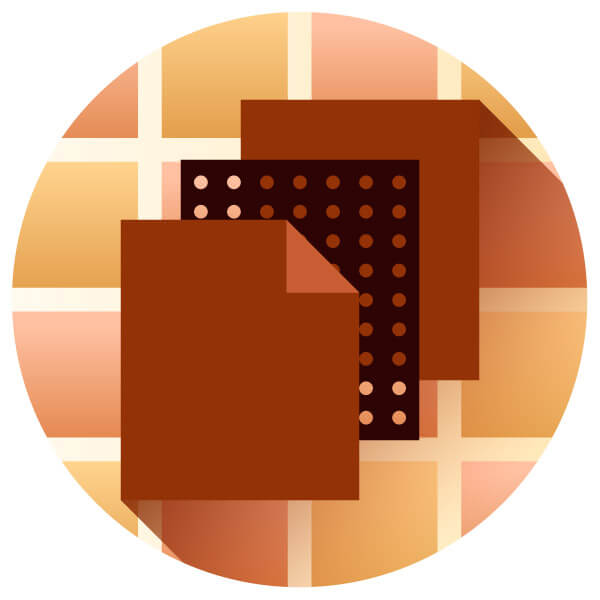
The material is particularly relevant for cooker pots, as the sticks are always designed in a similar way. The pot models are usually made of stainless steel. The material offers high stability as well as a high-quality look. The heat storage properties are also better. Stainless steel appliances are also usually dishwasher-safe. Some cookers are made entirely of plastic, including the filling vessel. Plastic models are usually easier to clean, cheaper and easier to handle due to a low weight. In addition, these models are available in different colours.
Capacity
The volume indicates how many litres of water the container can hold. For a household of two people, two to five litres are perfectly adequate. For three to four people, the container should be able to hold between four and eight litres, depending on the quantity to be cooked. If you want to prepare food for more than four people, sous-vide cookers with a capacity of ten litres or more are recommended.
| Capacity in litres | Number of people |
| 2 to 5 | 1 to 2 |
| 4 to 8 | 3 to 4 |
| > 10 | > 4 |
Sous-Vide sticks can be used as desired in conventional top pots. However, the pot used needs to be at least ten centimetres high to accommodate the heating element. Most sticks are suitable for pots with a capacity of up to 20 or even 30 litres. The more water there is in the pot, the more difficult it is to keep this amount at an even temperature.
Weight
Sous-vide cookers are not too heavy. Most sous vide cookers weigh between one and five kilograms. The sticks are a few kilograms lighter: they usually weigh between one and one and a half kilograms. The only additional handling factor is the weight of the pot used.
Functions and extras
Some sous vide cookers have various functions and extras that optimise the cooking process and make your work easier.
Cooking time
The cooking time varies depending on how the different appliances work. The maximum cooking time tells you how long the sous vide cooker can cook the food without pausing. Most models have a 24-hour function that allows you to cook food for up to 24 hours. Some appliances even offer the possibility to cook the food for two to three days; in some cases even up to 100 hours.
Circulating pump
Both sous vide cooking pots and some sticks have a circulation pump. A built-in circulation pump circulates the water in the container. In this way, the appliance ensures that the water is evenly distributed and at the right temperature. Bear in mind that such an extra feature makes the appliances louder overall.
Temperature control
Thanks to an automatic temperature control, you do not have to manually adjust the temperature during a longer cooking process. You enter a desired temperature in advance, which the appliance should maintain throughout the process.
Timer
A timer is a handy extra function to know when the process is finished. An acoustic alarm is triggered as soon as the cooking process is finished. On most models, the timer can be set at ten-minute intervals.
Display
Some sous-vide cookers are operated by individual knobs or dials; a display shows information such as the selected temperature and the clock and remaining cooking time. For better readability, these are usually illuminated LED displays. Some sous vide cookers have a modern touch screen that can be operated intuitively. All buttons and information are combined on one display.
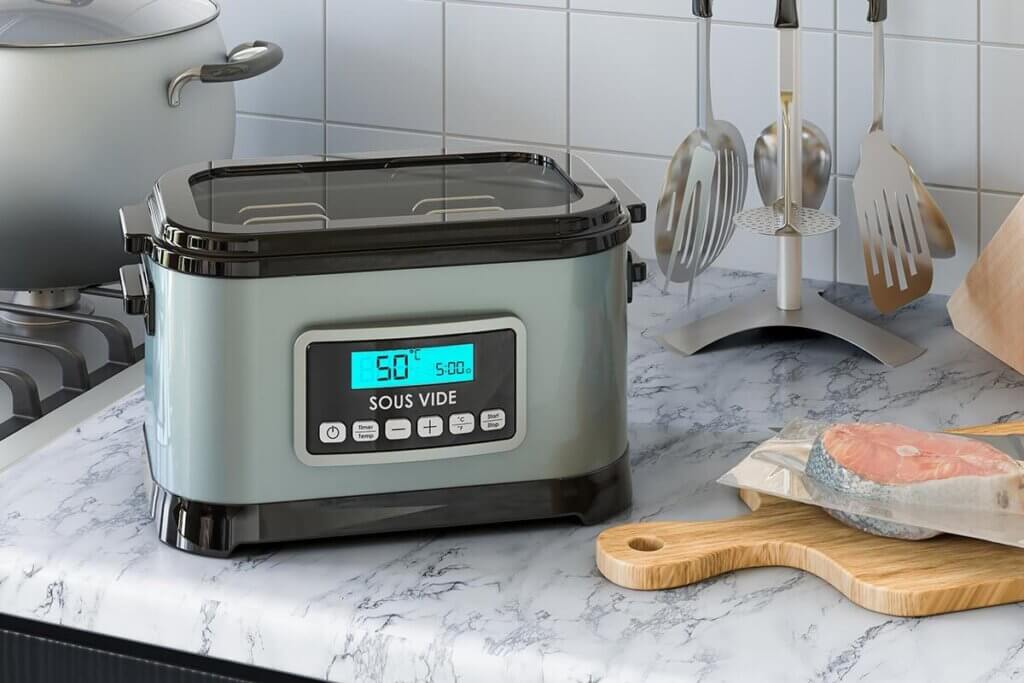
How do I clean a sous vide cooker?
Basically, you should clean the water basin after each use. If the vessel can be removed, cleaning is particularly easy. Do not use any pointed or sharp utensils, such as steel wool. These would damage the vessel, especially if it is non-stick. Pots with a non-stick coating are easier to clean with a cleaning cloth. Some sous vide cookers are even dishwasher-safe. You can wipe the housing and the display with a damp cloth. With a sous vide cooking stick, it is important that the electronic parts do not come into contact with water. Usually, the devices are designed so that these parts are sealed waterproof or you can remove the electronics. This way you can clean the stick under running water without worrying.
Safety note: Danger of burns
Because of the hot water inside, sous vide cookers also get very hot on the outside. The lid, handles or other edges on the appliance can quickly become hot, so you should not move the cooker during the process. Select a low temperature if you want to cook food for up to 24 hours or longer. This is perfectly adequate for this length of time; besides, you won’t have an overly hot appliance in the kitchen during the period. Sous vide cooking sticks and the pots they are attached to can also heat up a lot. So always make sure that you use your sous vide cooker on a heat-resistant base or surface.
Tips for sous vide cooking
Before you can start cooking, you need to put the food in a bag and vacuum seal it. Wash your hands carefully beforehand so that no dirt gets into the bags. You should also wash and dry raw meat before placing it in the vacuum bag.
You can season the food in the bag as you wish. However, do not use extra virgin olive oil or raw garlic. Cooking with these ingredients creates a metallic taste. Instead, use heat-treated oils. Overall, you should only use herbs and spices sparingly: The aromatic substances remain in the bag and do not volatilise. Even small doses thus provide intense aromas. If in doubt, you can season afterwards.
Only place the finished vacuum bag in the water bath when the water has reached the desired temperature. To speed up the heating process of the sous-vide cooker, you can add pre-heated water from the kettle. Put the lid on or spread the insulation balls in the pot to prevent heat loss.
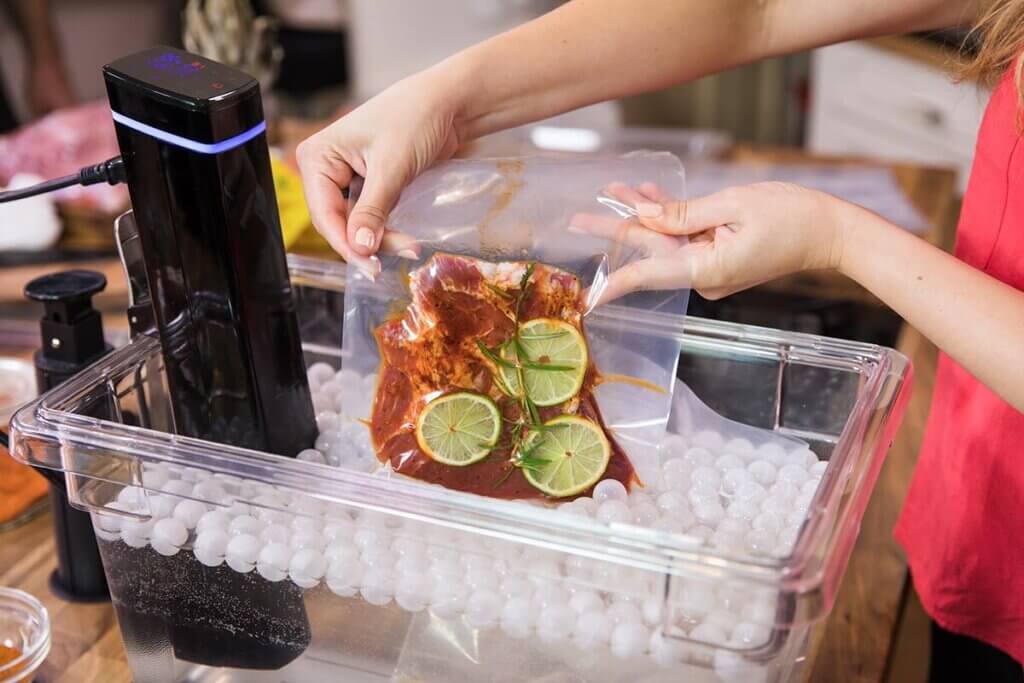
After the cooking process is complete, you should sear meat briefly in the pan. This is because cooking does not kill salmonella; you only achieve this through the high heat in a pan. This creates additional roasted aromas that give the cooked food the final culinary touch.
Cooking times
The cooking time for meat and fish depends on the thickness of the food. For vegetables, the hardness is the most important factor. The specifications for the individual foods always correspond to the minimum time that the food must cook in water. Longer cooking times do not make the food go bad. Overcooking or burning is not possible with a sous-vide cooker.
| Food | Cooking time in minutes | Temperature in degrees Celsius |
| Beef steak | 90 | 65 |
| Chicken leg | 60 | 80 |
| Salmon fillet | 30 | 55 |
| Calamari | 130 | 95 |
| Vegetables | Variable | 95 |
Alternatives to sous-vide cooking
If you would like to try the cooking method first before buying a sous vide cooker, you can do so with the following alternatives:
Water bath in the oven: fry vegetables or meat in a pan and then place in a water bath in the oven.
Multicooker: Vacuum the food and put it in the multicooker as soon as the water in it has reached the right temperature. Seal the pot.
Steamer: The food is not in a sealed bag. Instead, the hot steam gets directly to the food. The flavour is therefore somewhat weaker.
Slow cooker: In a slow cooker made of earthenware, the food is cooked at low temperatures for several hours.

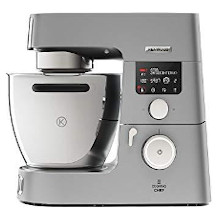
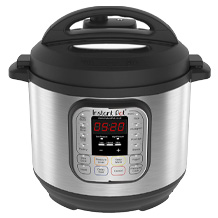
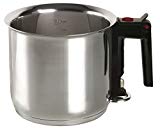
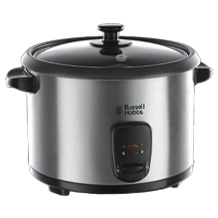
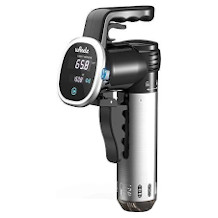
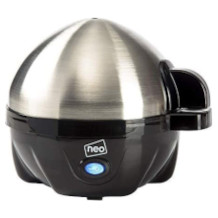
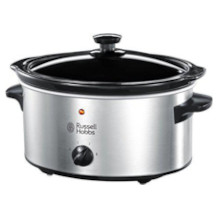

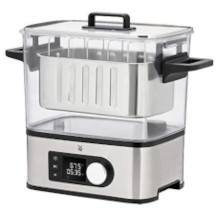
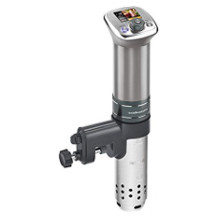
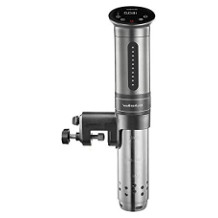

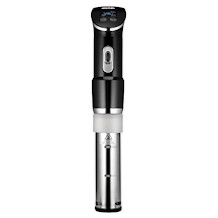
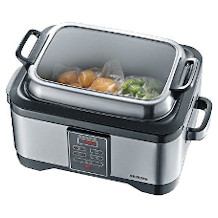
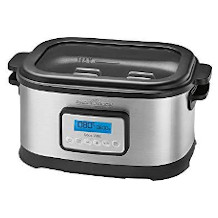
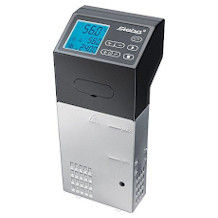
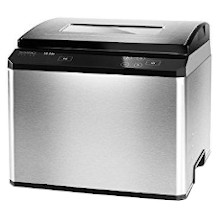
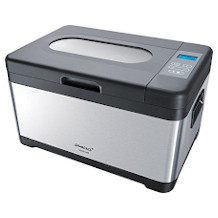

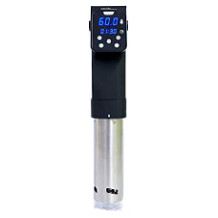

 1,760 reviews
1,760 reviews
